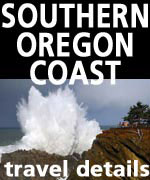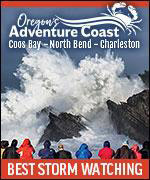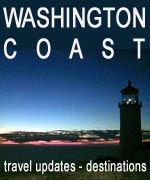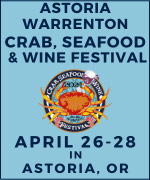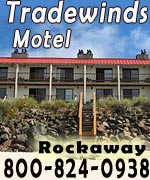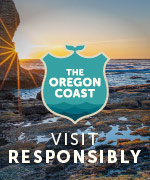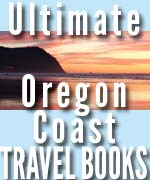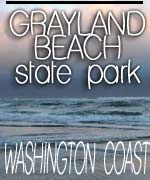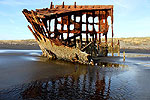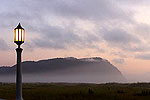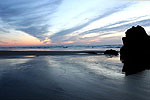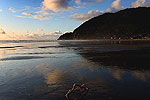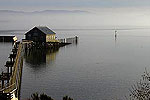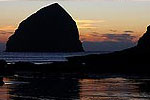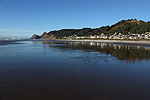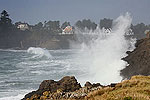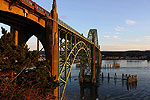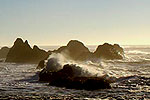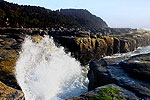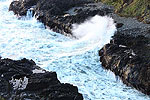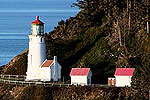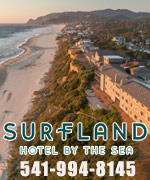Wrecking the Peter Iredale: How Oregon Coast History Played Out in 1906
Published 07/05/020 at 4:44 AM PDT
By Oregon Coast Beach Connection staff
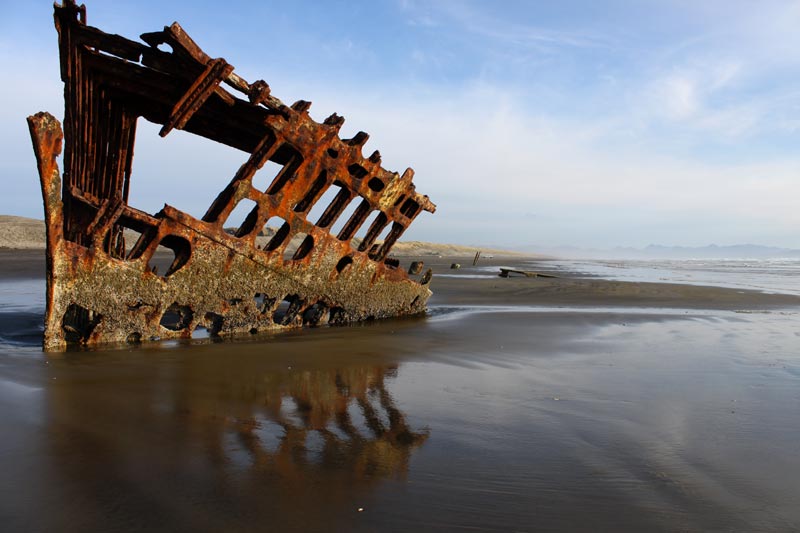
Includes exclusive listings; some specials in winter
In Cannon Beach:
Includes rentals not listed anywhere else
In Manzanita, Wheeler, Rockaway Beach:
Some specials for winter
In Pacific City, Oceanside:
Some specials for winter
In Lincoln City:
Some specials for winter
In Depoe Bay, Gleneden Beach:
Some specials for winter
In Newport:
Look for some specials
In Waldport
Some specials for winter
In Yachats, Florence
Some specials for winter
(Warrenton, Oregon) – May she rust in pieces, you could say of the wreck of the Peter Iredale, whose tattered, metallic bones now show less and less every half decade. What is known as the most photographed shipwreck in the world is a major attraction on this coastline, but it is disappearing. How much comes off each year isn’t known – it’s simply noticed.
This famed shipwreck has quite a story to tell, and these days much more is known about it. Yet how it all played out at the time is an exciting read, an engaging adventure, especially with the extensive coverage various papers gave it, including the Morning Astorian on Friday, October 26.
The wee hours of October 25 were wild and stormy, and they were certainly chaotic if you were out to sea on the north Oregon coast. It was in this gale that the four-masted barque Peter Iredale was approaching the mouth of the Columbia River. She was a British ship made mostly of steel, coming to Astoria after leaving Mexico some 29 days ago. It was her ninth time to the burgeoning port city, and everyone in the dock and shipping industry knew her well.
According to reports at the time it was about 2 a.m. when Captain H. Lawrence first spotted the lights of Astoria, but due to the weather they were flickering in and out of view. Going by the book, Lawrence knew to stick it out until daylight when the path through the rivermouth would be clearer. However, as the Morning Astorian put it: “the captain lost his bearings in the sweep of the currents, and before he knew it, was involved beyond hope of escape.”
Captain and crew only had a few minutes warning of the close proximity to land. A lookout screamed “breakers dead ahead,” and instantly Lawrence gave the command to steer the ship another direction. However, she didn’t answer the helm in such rough conditions, and only a minute or two of near-panic was greeted by the horror of actually crashing on the shore.
It was 7:45 in the morning.
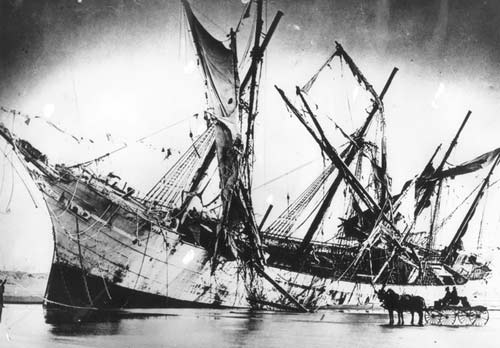
The impact was enormous. Immediately, almost everything sticking out of the ship or lying on its deck was torn off and flung into the sea. All four masts crackled and snapped. Even the massive anchors were shot outward and off the ship, spotted later with “plenty of slack in the chain.” Not a single member of the crew understood that weird bit of physics, nor did anyone witness it happen.
Wave after wave came washing over the ship, and within minutes it was tilted over, leaning towards the shore as it is now. The Peter Iredale was in some 13 feet of sea water, it's estimated.
Upon crashing on this north Oregon coast stretch of beach, the captain gave orders to abandon ship. He and the crew hadn’t even completed the preparations when the Point Adams life-saving crew arrived on the scene with a rescue boat, and quickly the crew of the Peter Iredale were safe in the small vessel and then on land. Only a handful of instruments were saved from the ship.
All crew – including two stowaways – made it safely onto the beach. As they disembarked the rescue boat, they were greeted by a large group of volunteers from nearby Fort Stevens. In an age nearly 100 years from the internet or decades from thorough telephone distribution, news spread fast. Quickly, just about everyone living in the area was down there as well. The newspaper called it “telepathic.”
Almost all the locals showed up with bottles of liquor, both large and small. It’s often reported that Lawrence and his crew toasted the ship before leaving the beach, but according to one article most of the men got various degrees of hammered. Really hammered; it's kind of an amusing party, really.
The crew went on to the Point Adams station to be fed, dried up and lodged for the night, and in the following afternoon the vast majority boarded a train for Astoria to be billeted up there for awhile. Two men stayed in the hospital for a time. However, a few men got so liquored up on the beach they were unable to make that train for Astoria.
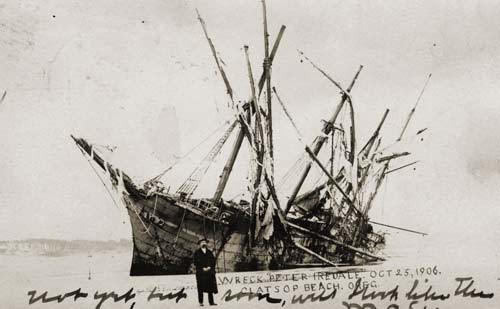
The article comments: “A bottle of whiskey is the most tempting of all creature comforts to a sailor, afloat or ashore, or in a stress, and this was proven all too plainly yesterday.”
Behind the scenes, the local British consulate in Astoria was made aware of the wreck shortly after by phone, and it was he who paid for the crew’s train tickets to Astoria. The life-saving station, led by a Captain Wicklund, had to carry their rescue boat over two miles of wet shoreline to get it into the water near the Peter Iredale. That happened in about an hour after the wreck, according to the paper.
As the afternoon wore on, the archetypal Oregon coast storm did not let up, and a host of official inspectors and media from the region had to abandon the mile-long trek by foot to check out the wreck of the Peter Iredale.
Several years later, Captain Lawrence shows up again in Oregon media reports, now the captain of another grain carrier, the Philadelphia. That ship was bound for Portland when it hit another major storm in November of 1913, and it threatened his latest vessel. He said for a time “it looked like another Peter Iredale.” It made it through, and Lawrence stopped in the area to visit old friends he’d made over the years.
Near the end of the article, one official comments the wreck will be there for “some time to come.” Hopefully that will be longer rather than sooner. (Also see More to History of Oregon Coast's Peter Iredale Than Just a Shipwreck )
Hotels in Astoria/Seaside - Where to eat - Astoria Maps and Virtual Tours
Cannon Beach Lodging
Nehalem Bay Lodgings
Manzanita Hotels, Lodging
Three Capes Lodging
Pacific City Hotels, Lodging
Lincoln City Lodging
Depoe Bay Lodging
Newport Lodging
Waldport Lodging
Yachats Lodging
Oregon Coast Vacation Rentals
Oregon Coast Lodging Specials
More About Oregon Coast hotels, lodging.....
More About Oregon Coast Restaurants, Dining.....
LATEST Related Oregon Coast Articles
Off-season rates plus more at Keystone Vacation Rentals. Depoe Bay lodging specials, Lincoln City hotel reviews, Newport hotel reviews
Florence Rhododendron Festival Hits Florence and Central Oregon Coast Soon
May 15 to 18, food vendors, a carnival, parades and even a classic car cruise. Florence events, Newport events Manzanita events, Cannon Beach events, Seaside events, Astoria events
South Oregon Coast Landmark Under the Knife: Bandon's Face Rock Viewpoint Clo...
Set to reopen on May 23, parking lot and restroom closed, Depoe Bay, Cape Foulweather. Travel tips
Oregon State Parks Day on June 7: Free Parking and Events on Coast, Inland
Hikes, talks, BBQ, disc golf and even astronomy. Sciences, south coast events, Florence events, Astoria events, Seaside events, Cannon Beach events, Manzanita events, Rockaway Beach events, Tillamook events, Garibaldi events, Oceanside events, Pacific City events, Lincoln City events, Depoe Bay events, Newport events, Waldport events, Newport events, Yachats events, Brookings, Coos Bay, Reedsport
Road Work Coming to North Oregon Coast's Gearhart and One of World's Largest ...
Lane closures this summer on the bridge; major work in Gearhart next year. Washington coast
Search for Missing Teen Called Off After Involving Coast Guard from Washingto...
Two companions that tried to help also needed rescue at Long Beach. Beach safety, sciences
Oregon Coast Lighthouse Tours 2025: What's Open, What Isn't
Port Orford, Bandon, Florence, Newport, Oceanside, history, Coos Bay, Winchester Bay, Reedsport, Yachats, Seaside, Cannon Beach
Sizable Price Drop, Deals in Lincoln City During Quiet of April on Central Or...
20 perc off at A1 Vacation Rentals across its roster, including Gleneden Beach. Lincoln City specials
Back to Oregon Coast
Contact Advertise on BeachConnection.net
All Content, unless otherwise attributed, copyright BeachConnection.net Unauthorized use or publication is not permitted












